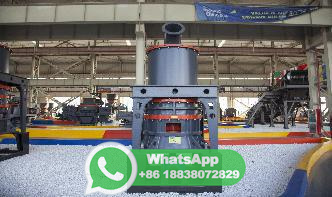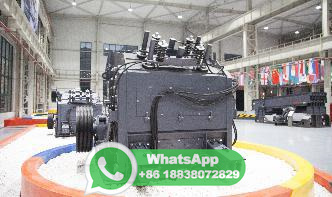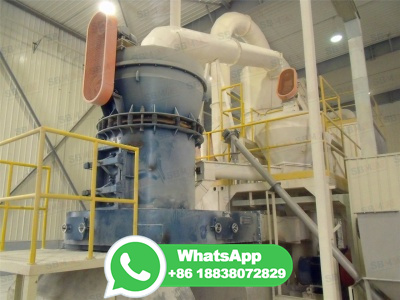
Micro Milling Concrete Mix is a blend of Sand, Fine Aggregate and Cement. Tips Usage. USESRepairing of concrete, setting posts, anchoring poles, casting driveways, walkways and steps. APPLICATION. Empty contents into a mechanical mixer, wheel barrow or a smooth nonporous surface. Add approximately 3 US Quarts/50lbs bag and mix thoroughly ...
WhatsApp: +86 18838072829
The chemical composition of CSW is shown in Table content of SiO 2 in the CSW exceeds 36% for the incorporation of sand in the concrete production process which still exists after filter pressing (Yellow circle in Fig. 3).Most of the water has been removed after filter pressing, but cement residues, hydration products, sand, and small gravels are accumulated in the CSW.
WhatsApp: +86 18838072829
OksriNelfia et al. (OksriNelfia et al., 2016) studied RP that was obtained by fully milling RCA to a maximum size of 300 µm and then sieving it to use the material under 80 µm. The ratio under 80 µm was 60 wt.% of the parent concrete and finer than the Portland cement used in the same study.
WhatsApp: +86 18838072829
ARLINGTON, Va.—At concrete plants across the world, diesel mixer trucks take in a polluting blend of sand, gravel, water and cement. A facility outside Washington,, is adding a new ...
WhatsApp: +86 18838072829
1. Introduction. Concrete slurry waste (CSW) is one of the possible types of waste generated in readymix and precast concrete plants. CSW is a product of the aggregate reclaiming system where unused concrete and truck washing water are treated in order to reclaim and recycle the aggregates CSW is the residue of this separation [1].The currently dominating CSW management practice is based ...
WhatsApp: +86 18838072829
Both impact the workability and strength of concrete. So, one must also know how to avoid segregation and bleeding in concrete. Segregation is the separation of the aggregates from that of the cement slurry whereas bleeding is the separation of water and rising to the surface of the concrete pour. Segregation generally happens when the fall of ...
WhatsApp: +86 18838072829
Pour the salt water into a separate container. Now collect the sand. Pour the salt water back into the empty pan. Heat the salt water until the water boils. Continue boiling it until the water is gone and you're left with the salt. Another way you can separate the salt water and sand is to stir up the sand/salt water and pour it through a ...
WhatsApp: +86 18838072829
Silica is the basic component of sand, which is used with cement for plastering and concreting. This fine silica will provide a very compact concrete. The ash also is a very good thermal insulation material. ... may be useful to improve the workability of concrete mixtures by reducing the cement milk separation and segregation and increasing ...
WhatsApp: +86 18838072829
Concrete milling is the process of removing the top layers of a concrete surface. It's carried out using scarifying machines equipped with diamondtipped blades. Milling operations are effective at creating level, smooth surfaces that provide a lot of traction. Plus, the material that's chipped away can be repurposed for aggregate material ...
WhatsApp: +86 18838072829
Cementing is the process of mixing a slurry of cement, cement additives and water and pumping it down through casing to critical points in the annulus around the casing or in the open hole below the casing string. The two principal functions of the cementing process are: If this is achieved effectively, other requirements imposed during the ...
WhatsApp: +86 18838072829
Concrete is the most commonly used of all the building materials in the world due to its unique advantages compared to other materials [1].The main reasons for its fame are because concrete has excellent mechanical feature and affordable [2], [3], [4], [5].It also has the tendency to be designed into a variety of sizes and forms [6].Moreover, the conventional concrete is estimated to be ...
WhatsApp: +86 18838072829
Asphalt, Cement, Concrete, and Aggregate Product Plants October 2019 This document provides emission factors for estimating total suspended particulate matter (PM) emissions (not PM 10) for individual emission source at aggregate (sand and gravel), brick and tile, hot mix asphalt, cement, concrete batch plants.
WhatsApp: +86 18838072829
After the sedimentation of the concrete slurry waste, the deposited solid suspension particles are collected to form the RCSW. These suspension particles mainly comprise hydrated/carbonated cement particles, such as CSH gel, portlandite, calcite, calcium aluminate hydrates, and unclaimed fine aggregates (Tang et al., 2020).
WhatsApp: +86 18838072829
Segregation of concrete meaning. Segregation of concrete means the partition of course material such as cement paste,sand, water from coarse aggregate that is occurs in increasing the water quantity in the concrete mix, the coarse aggregates are detached thus results in segregation of concrete which is described the particulate solids tend to separate in transit state of concrete application ...
WhatsApp: +86 18838072829
11/95 Sand And Gravel Processing Sand And Gravel Processing Process Description16 Deposits of sand and gravel, the unconsolidated granular materials resulting from the natural disintegration of rock or stone, are generally found in nearsurface alluvial deposits and in subterranean and subaqueous beds.
WhatsApp: +86 18838072829
Segregation occurs when different components of concrete are separated from each other. The separation is usually due to excessive vibration of the cement, different materials forming concrete mixtures having different weights. Coarse aggregates settle to the bottom, followed by sand, fines, cement and finally water.
WhatsApp: +86 18838072829
Q. Separation of water in the fresh concrete is called : Q. The cement concrete from which entrained air and excess water is removed after placing it in position is called. Q. The minimum watercement ratio for durable concrete is : Q. For a satisfactory workable concrete with a constant water cement ratio, increase in aggregate cement ratio . Q.
WhatsApp: +86 18838072829
Request PDF | Novel separation process for obtaining recycled cement and highquality recycled sand from waste hardened concrete | Separation is a fundamental step for concrete recycling, enabling ...
WhatsApp: +86 18838072829
We first discuss cement production and special nomenclature used by cement industrialists in expressing the composition of their cement products. We reveal different types of cement products, their compositions, properties, and typical uses. Wherever possible, we tend to give reasons as to why a particular cement type is more suitable for a given purpose than other types. Cement manufacturing ...
WhatsApp: +86 18838072829
Trial mix design were conducted to obtain the target strength of 35 MPa at 28 days with a workability of 100125 mm as per American Concrete Institute ACI (ACI, 2009).The glass powder replacement in cement was varied (025%). Mix proportion of concrete is shown in Table, stone chips and sand were dry mixed for a minute.
WhatsApp: +86 18838072829
After the experiments with cement mortar, the disintegrated sand treated with specific milling energy (E s) kWh∙t1 was introduced in the high strength selfcompacting concrete (SCC) to partially replace cement by 5, 10 and 15 wt. % respectively. The mixing procedure was carried out in a planetary drum mixer and included Figure 2.
WhatsApp: +86 18838072829
The waste concrete component separating method includes the following steps: heating, pulverizing or other steps to expand and increase micro cracks inside concrete, extruding or adding friction force and sieving to separate coarse aggregate and mortar; and pulverizing mortar to separate quartzite and cement of different milling property and ...
WhatsApp: +86 18838072829
milling of existing asphalt pavement : 330: hot mix asphaltgeneral construction requirements : 334: superpave asphalt concrete : 337: ... materials for portland cement concrete (structural, pavement and miscellaneous) 921: portland cement and blended cement : 923: water for concrete : 924:
WhatsApp: +86 18838072829
Portland Cement Concrete Pavement (PCCP) Portland Cement Concrete (PCC) pavement, or rigid pavement, refers to the rigid concrete layer of the pavement structure that is in direct contact with the traffic. Typical concrete is composed of coarse aggregate (crushed stone and gravel), fine aggregate such as sand, portland cement and water.
WhatsApp: +86 18838072829
Highlights Reduction of cement paste content on fine recycled aggregates. Density and magnetic separation to remove particles with cement paste attached. Advanced characterization to define liberation of natural aggregates. A lowcement paste content recycled sand may be achieved with high mass recovery. The change in recycling approach encourages the use of recycled sand.
WhatsApp: +86 18838072829
sand,ballast,machine cut stones,cement and building materials suppliers in Kenya, separation of sand from cement by milling concrete recycling technology, Get Price recycle finalindd Building Construction Authority, is to separate concrete into its constituent sand, gravel and cement paste While the, In order to avoid the (Note: If product ...
WhatsApp: +86 18838072829
The root cause of segregation of concrete is the difference in specific gravity and size of its constituent material. The specific gravity of water is The specific gravity of cement is around while that of aggregate is to Due to differences in specific gravity lighter particles have a tendency to move upwards and heavier ...
WhatsApp: +86 18838072829
Surface coating is a simple and effective method to reinforce recycled aggregate (RA), and its efficacy is closely related to the basic property of surfacecoated material (SM), such as mechanical strength, water absorption, compactness and permeability. In present work, recycled powder was treated by wet grinding to obtain micronrecycled powder (MRP) and submicronrecycled powder (SRP) for ...
WhatsApp: +86 18838072829
Concrete is basically a mixture of two components: Aggregates and paste. The paste, comprised of Portland cement and water, binds the aggregate (sand and gravel or crushed stone) into a rocklike mass as the paste hardens because of the chemical reaction of the cement and water. Aggregates are generally divided into two groups: fine and coarse.
WhatsApp: +86 18838072829